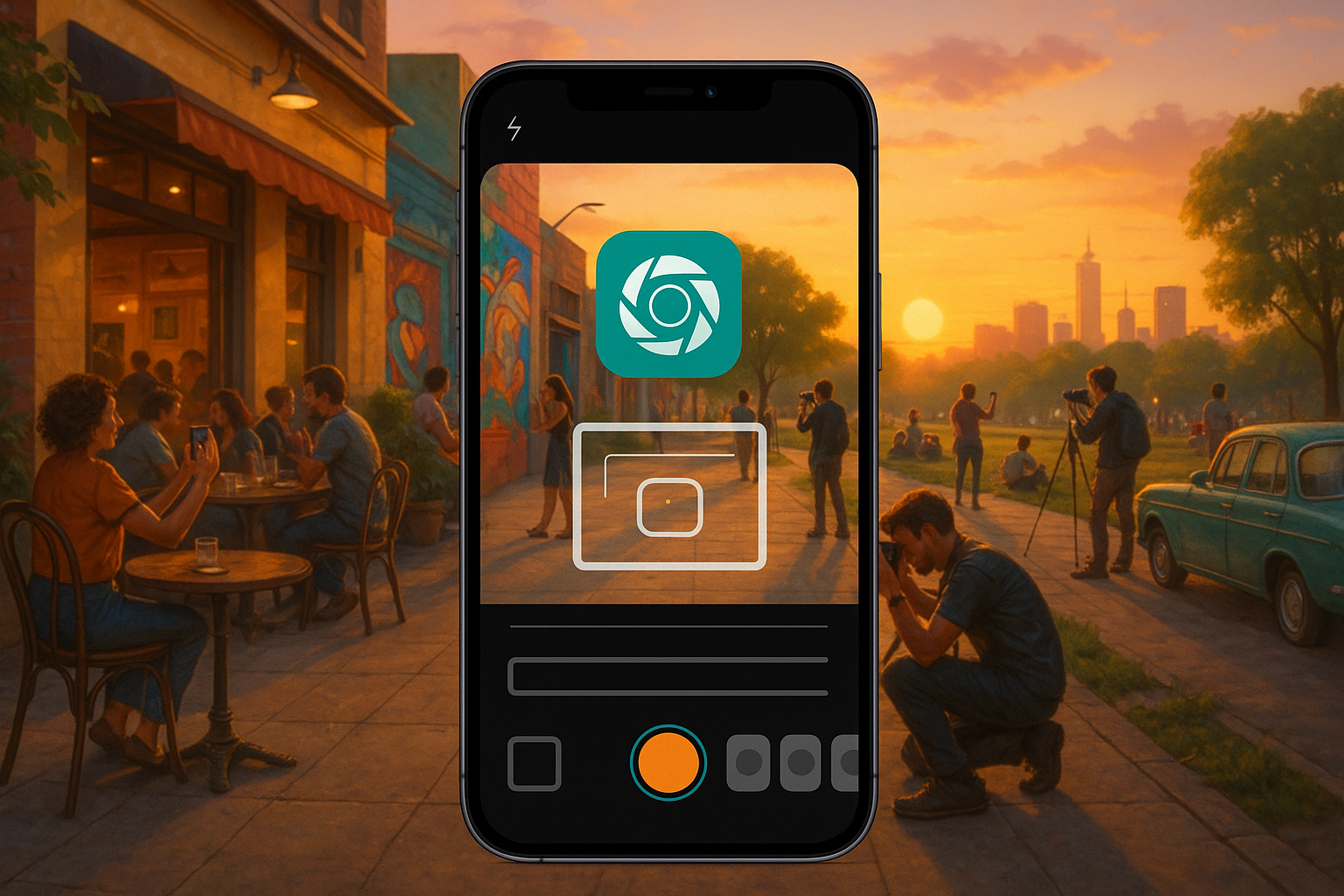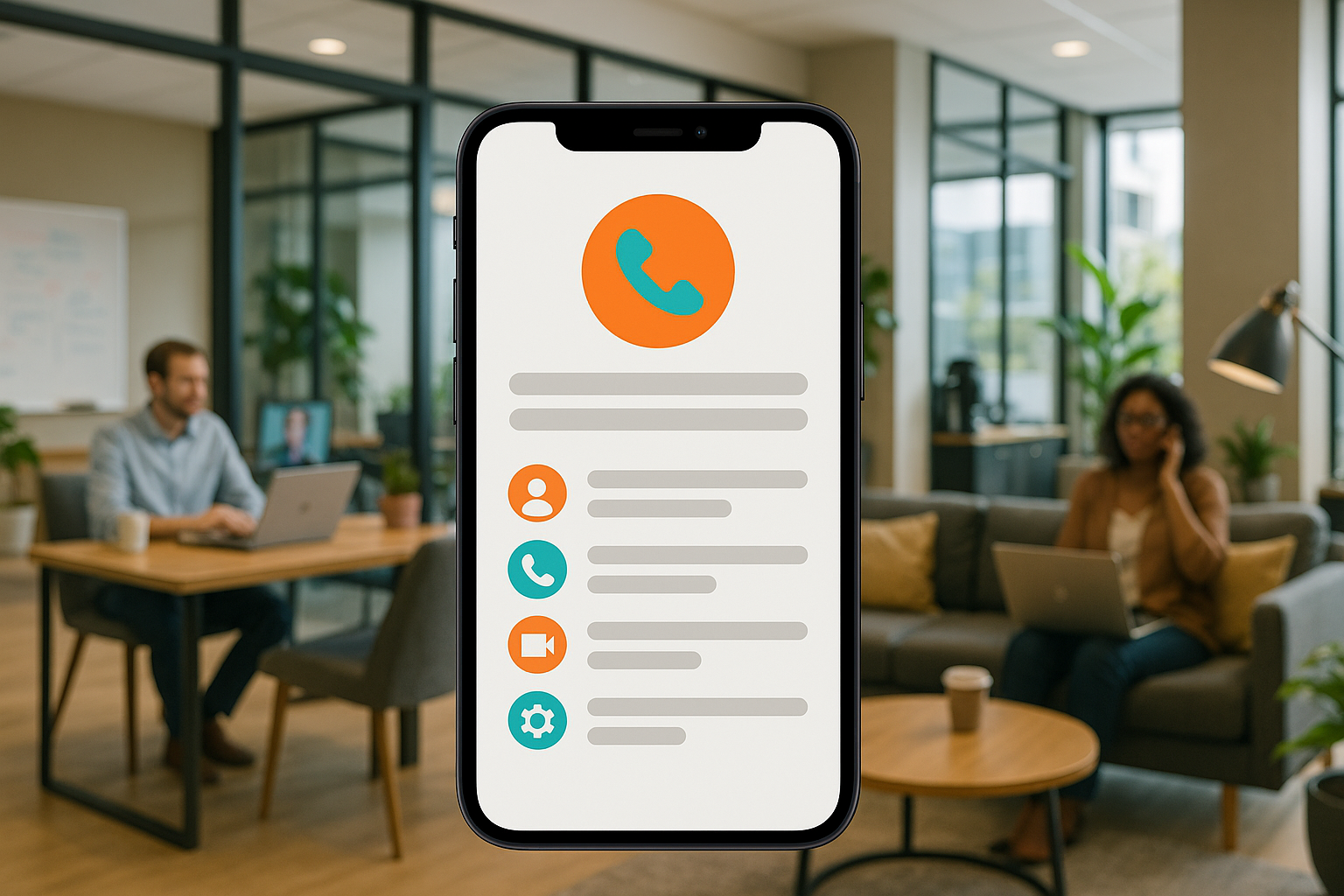Introduction
In an era dominated by visual content, the smartphone camera has evolved from a simple novelty into a sophisticated tool for communication, art, and commerce. This evolution has spurred a demand for camera applications that offer more power, control, and creativity than the native software provided by device manufacturers. However, building a camera app, or even integrating advanced camera functionalities into an existing application, is a formidable challenge. The process is fraught with complexities that require deep technical expertise, a nuanced understanding of hardware variance, and a forward-thinking strategic approach.
Many businesses and startups envision an app with a unique camera-first interface, powerful editing tools, or specialized photographic capabilities, only to find the development process far more demanding than anticipated. The gap between a brilliant idea and a functional, market-ready product can be vast. This article serves as a comprehensive guide to navigating the intricate world of camera app development. We will explore what defines a modern camera app, examine the different types of apps on the market, and provide an understanding of the potential development costs.
Most importantly, we will discuss how to choose the right development partner to bring your vision to life. As a top US AI-powered app development firm with over 20 years of experience, we at MetaCTO specialize in turning complex ideas into polished, successful mobile applications. We understand that integrating a powerful camera is not just a feature—it’s the core of the user experience for many of today’s most successful apps. This guide will show you how partnering with an expert team like ours can help you overcome the hurdles of development and launch a product that stands out.
What is a Camera App?
At its core, a camera app is a piece of software designed to transform a smartphone’s native, often automated, camera into a highly controllable and versatile photographic instrument. While the default camera on most iOS and Android devices is engineered for simplicity and speed—perfect for quick, point-and-shoot moments—it often lacks the granular control that photographers and power users crave. Specialized camera apps fill this void by unlocking the full potential of the device’s underlying hardware.
The primary function of these applications is to provide users with manual control over the fundamental elements of photography. This means moving beyond the automatic settings and allowing direct manipulation of exposure, focus, and file formats. Key features that define a powerful camera app include:
- Manual Mode: This is the cornerstone of any serious camera app. It gives the user full control over the “exposure triangle”—aperture (on devices that support it), shutter speed, and ISO. By adjusting these settings independently, a user can achieve specific artistic effects, such as a blurred background (bokeh), a frozen motion shot, or a clean image in low light, that are impossible to create reliably with an automatic camera.
- Priority Modes: For users who want more control than full auto but less complexity than full manual, priority modes offer a perfect middle ground.
- Shutter Speed Priority Mode: The user sets a specific shutter speed to either capture fast motion without blur or intentionally create motion blur, and the camera automatically calculates the appropriate ISO to achieve a correct exposure.
- ISO Priority Mode: The user sets the ISO, which controls the sensor’s sensitivity to light, to manage digital noise, and the camera automatically adjusts the shutter speed accordingly.
- File Format Selection: Professional and enthusiast photographers understand the importance of file formats. While the default for most smartphones is a compressed JPEG, advanced camera apps offer a choice. The ability to shoot in different formats is critical for post-processing and achieving the highest possible image quality. These apps should, at a minimum, allow the user to select a high-quality JPEG file, but many also offer superior options like TIFF for lossless quality or RAW, which captures the unprocessed data directly from the camera sensor, providing maximum flexibility in editing. Some modern apps even support HEIF, an efficient format that offers better compression than JPEG at a similar quality level.
Ultimately, a camera app is an enabler. It provides the tools and freedom that allow a user to execute their creative vision, turning a simple snapshot device into a deliberate photographic tool. Because these apps must interface directly with the device’s hardware and operating system APIs, they are inherently platform-dependent, with different applications being developed specifically for either iOS or Android.
Reasons That it is Difficult to Develop a Camera App In-House
Embarking on the development of a camera application, or integrating sophisticated camera features, is not a task for the faint of heart. While the end-user experience of a well-made app might feel seamless and intuitive, the underlying engineering is exceptionally complex. This complexity is the primary reason why many in-house teams, even those with general app development experience, struggle to deliver a high-quality product.
The challenge is not merely about writing code; it’s about mastering a highly specialized domain where software meets a vast and inconsistent hardware ecosystem. Applications like ProCamera, described as an “advanced” and “more complicated app” with “more possibilities,” are the result of dedicated, expert-level engineering. Building something of this caliber requires a team that possesses more than just generalist knowledge. The level of freedom and control these apps provide comes at the cost of immense development intricacy.
Attempting to build such a product in-house often leads to unforeseen roadblocks, extended timelines, and budget overruns. Without a deep bench of specialists, a project can easily become mired in technical debt or, worse, result in a subpar user experience with bugs, crashes, and poor performance. This is why partnering with a dedicated agency is often the more strategic and cost-effective path.
Hiring a development agency like MetaCTO mitigates these risks. With over two decades of experience and more than 120 successful projects launched, we have honed a process designed to handle complexity. Our team of experts has navigated the challenges of intricate integrations time and time again. We provide not just developers, but a full strategic partnership that includes project management, UX/UI design, and quality assurance, ensuring every aspect of the app is polished and market-ready. Our Custom Mobile App Development service is structured to take your idea from concept to launch, handling the entire process so you can focus on your business goals. For projects that have already started and run into trouble, our Project Rescue service can get you back on track, turning technical setbacks into a clear path forward.
Different Types of Camera Apps
The camera app market is not monolithic. Applications are designed to serve a wide spectrum of users, from casual beginners looking for a slight upgrade to their native camera to intermediate and professional photographers who demand uncompromising control. Understanding these different tiers is crucial when planning your own app, as it helps define your target audience and feature set. The apps are platform-dependent, with distinct leaders on both iOS and Android.
iOS Camera Apps: From Simplicity to Sophistication
Apple’s iOS is home to a mature ecosystem of powerful camera apps. They generally fall into two camps: those that prioritize ease of use while adding significant control, and those that aim to replicate a professional DSLR experience.
Camera+: The Beginner-Friendly Powerhouse
Camera+ is a classic example of an app designed for beginners who are ready to graduate from the stock camera. Its philosophy is built around a core premise: give users more control without overwhelming them.
- User Experience: The interface of Camera+ is celebrated for being clear and easy to use. It successfully introduces manual controls without creating a cluttered or intimidating screen.
- Features: Despite its simplicity, Camera+ is feature-rich. It allows users to shoot in Manual mode, Shutter speed priority mode, and ISO priority mode. This suite of controls covers the essential needs of an aspiring photographer.
- File Formats: It offers an impressive array of file format choices, including standard Jpeg, the high-quality lossless Tiff, professional-grade RAW, and the modern, efficient HEIF.
- Limitation: The app does have a notable design trade-off. When shooting in Semi-Auto or Manual modes, the on-screen controls take over part of the screen, which means the frame is partly blocked. While it has fewer possibilities than more advanced apps, its focused feature set makes it an excellent entry point.
ProCamera: The Advanced Tool for Intermediate Users
For iOS users who find Camera+ too limiting, ProCamera represents the next step up. It is positioned as an advanced camera app for intermediate photographers who demand more creative freedom.
- Complexity and Freedom: ProCamera is unapologetically a more complicated app. This complexity is a direct result of its extensive feature set, which offers “more possibilities” and gives users “a lot more freedom than the default camera app.” It is designed for those who are comfortable with photographic principles and want an app that can keep up with their skills.
Android Camera Apps: Bringing Manual Control to the Platform
The Android ecosystem is known for its hardware diversity, and its camera app landscape reflects this. Several standout apps provide the manual controls that power users expect.
Two prominent examples are Camera FV-5 and Manual Camera. While the facts provide fewer specific details on their user interface or target audience compared to the iOS apps, their core functionality is clear and directly competitive. They are built to give Android users professional-level control over their device’s camera.
The following table summarizes the key features of these leading Android applications:
| Feature | Camera FV-5 | Manual Camera |
|---|---|---|
| Manual Mode | ✔️ | ✔️ |
| Shutter Speed Priority | ✔️ | ✔️ |
| ISO Priority | ✔️ | ✔️ |
| File Format Choice | ✔️ | ✔️ |
| Includes high-quality Jpeg | Yes | Yes |
Both Camera FV-5 and Manual Camera ensure that Android users are not left behind, offering the essential suite of manual and priority shooting modes along with the crucial ability to choose file formats. This empowers them to take full creative control of their photography, just like their iOS counterparts.
Cost Estimate for Developing a Camera App
Determining the cost of developing a camera app is one of the most critical steps in the planning phase. The financial investment required can vary dramatically based on the complexity, feature set, platform, and quality of the final product. A simple app with basic filter functionality will cost significantly less than a sophisticated, multi-faceted application designed to compete with industry leaders.
To provide a concrete, real-world benchmark, we can look at the estimated cost of building an application with the scope and complexity of a platform like Snapchat. An app that includes Snapchat’s core features—such as its unique camera-first interface, ephemeral messaging, extensive library of AR filters, robust media editing tools, stories feature, and location-based functionalities—is a massive undertaking. The development for such a project, which represents the high end of complexity for a camera-centric social app, would typically range from $70,000 to $250,000+.
This figure encompasses the entire development lifecycle, including:
- Strategy and Discovery: Defining the product, target audience, and feature roadmap.
- UX/UI Design: Creating an intuitive, engaging, and visually appealing user interface.
- Backend Development: Building the server-side infrastructure to support users, data, and features like messaging and stories.
- Frontend (App) Development: Writing the native code for iOS and/or Android to implement the camera controls, UI, and all other features.
- AR Filter and AI Feature Development: This is often one of the most complex and costly components.
- Testing and Quality Assurance: Rigorous testing to ensure the app is stable, performant, and bug-free across a wide range of devices.
It is essential to understand that this $70k-$250k+ range is for a top-tier, venture-scale application. Not every project requires this level of investment from day one. At MetaCTO, we champion a more agile and strategic approach. Our Rapid MVP Development service is designed to help you launch a streamlined version of your app in 90 days or less. This allows you to go to market quickly, test your core concept with real users, gather valuable feedback, and validate your business model—all while keeping initial costs low. An MVP approach is the smartest way to begin, allowing you to build, measure, and learn before committing to the full-scale investment.
Top Camera App Development Companies
Choosing the right development partner is arguably the most important decision you will make. The quality, success, and long-term viability of your app depend on the expertise, process, and dedication of the team you hire. While many firms can build an app, only a select few have the specialized experience required to excel at complex camera app development.
1. MetaCTO
At MetaCTO, we position ourselves as more than just a development shop; we are a strategic partner dedicated to building, growing, and monetizing successful mobile applications. With 20 years of app development experience, a portfolio of over 120 successful projects, and a proven track record of supporting clients in raising over $40M in funding, we bring a level of expertise and business acumen that is rare in the industry. Our 5-star rating on Clutch is a testament to our commitment to client success.
Our approach to development is holistic and AI-enabled. We understand that a great camera app in today’s market often requires more than just manual controls; it may involve cutting-edge technologies like computer vision and machine learning. Our expertise in AI Development allows us to integrate intelligent features that can set your app apart, from object recognition to automated image enhancement. We handle every step of the process, from initial validation to long-term evolution, ensuring your app not only launches successfully but also thrives in a competitive market. Our work with clients like G-Sight, where we implemented cutting-edge computer vision AI technology for their training app, demonstrates our capability in this advanced domain.
We believe in going to market faster, slashing costs, and providing expert guidance every step of the way. Whether you’re a startup looking to launch an MVP or an established business needing a fractional CTO to guide your technology roadmap, we provide tailored solutions to meet your goals.
2. DreamCo Design
DreamCo Design is another highly regarded company in the development industry. They have built a strong reputation for quality and have been recognized with numerous accolades.
- Industry Recognition: DreamCo Design has been named one of the best development companies in the industry and has earned titles such as “Best Web Design Agency” and “Small Business of the Year.”
- Commitment to Quality: Their dedication to quality work and unrivaled customer service is reflected in their (A+) rating with the Better Business Bureau (BBB).
While DreamCo Design has a strong and reputable background, our specialized focus at MetaCTO on complex mobile applications, AI integration, and a full-service growth and monetization strategy provides a distinct advantage for clients looking to build the next generation of camera-centric apps.
Conclusion: Build Your Vision with the Right Partner
Throughout this guide, we have journeyed through the multifaceted world of camera app development. We’ve defined what sets a specialized camera app apart from a native one—its ability to grant users granular control through Manual and Priority modes and flexible file formats. We’ve seen examples of successful apps, from the beginner-friendly Camera+ to the advanced ProCamera, illustrating the diverse needs of the market. We’ve also touched on the significant financial investment required for a feature-rich application, with costs for a complex project potentially reaching upwards of $250,000.
The central theme, however, is the inherent difficulty of this undertaking. Building a polished, high-performance camera app requires overcoming significant technical hurdles. It demands a development partner with not just coding skills, but deep, specialized expertise and a strategic, battle-tested process.
This is where we excel. At MetaCTO, we have spent two decades building and launching complex, successful mobile applications. We don’t just write code; we build businesses. Our comprehensive process—from validation and building to growth, monetization, and evolution—is designed to de-risk your investment and maximize your chances of success. We turn big ideas into apps that are better than you could have imagined.
If you have an idea for an app that leverages the power of the camera, don’t let the technical challenges hold you back. Let’s build it the right way, from day one.
Talk with an expert at MetaCTO today to discuss how we can integrate powerful camera technology into your product and turn your vision into a market-leading application.






